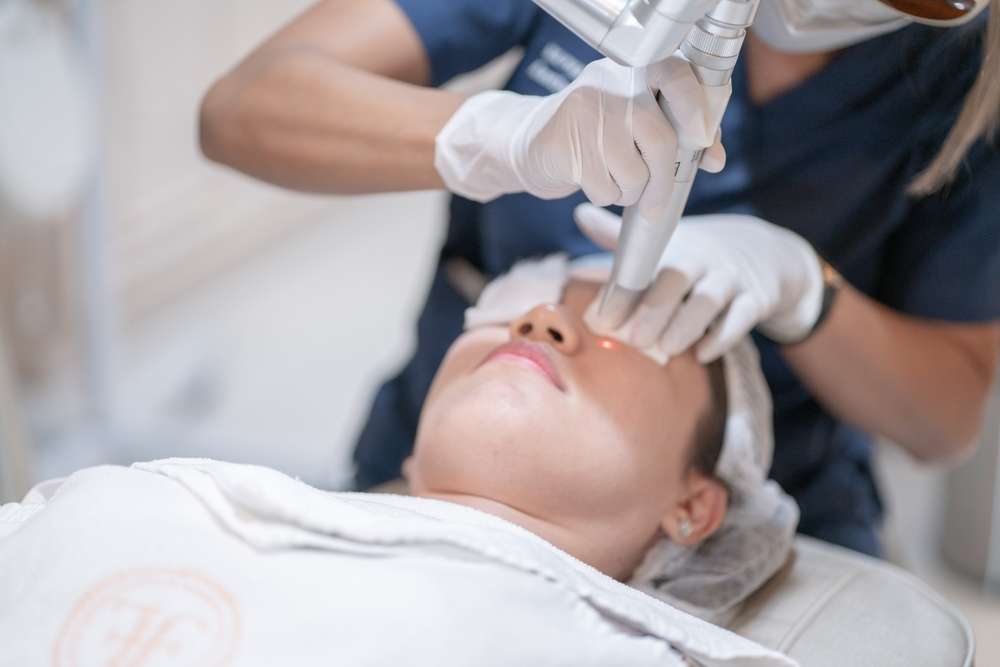Explore What You Need to Know About Laser Skin Treatments
Laser skin treatments have revolutionized dermatology and cosmetic procedures, offering precise solutions for various skin concerns ranging from wrinkles and age spots to acne scars and unwanted hair. These advanced medical procedures use focused light energy to target specific skin issues while promoting natural healing and regeneration. Understanding the different types of laser treatments, their applications, and what to expect can help you make informed decisions about your skin care journey.

Everything You Need to Know About Laser Skin Care Fundamentals
Laser skin care encompasses a broad spectrum of treatments that utilize different wavelengths of light to address specific skin conditions. The technology works by delivering concentrated light energy to targeted areas, which can either remove damaged skin layers, stimulate collagen production, or destroy unwanted pigmentation. Common applications include treating sun damage, reducing fine lines, improving skin texture, and addressing various forms of hyperpigmentation.
The most frequently used laser types include ablative lasers, which remove skin layers for dramatic results, and non-ablative lasers, which work beneath the surface without removing the top layer. Each approach offers distinct advantages depending on your skin type, concerns, and desired downtime. Fractional lasers have gained popularity for their ability to treat only a fraction of the skin at a time, promoting faster healing while still delivering effective results.
Discover Everything About Advanced Skin Laser Options
Advanced laser technologies have expanded treatment possibilities significantly. Carbon dioxide (CO2) lasers excel at treating deep wrinkles, scars, and significant sun damage, while erbium lasers offer gentler resurfacing with less downtime. Nd:YAG lasers effectively target deeper skin layers and work well on darker skin tones, making them versatile for various applications including hair removal and vein treatment.
Picosecond lasers represent cutting-edge technology, delivering ultra-short pulses that can target pigmentation with minimal heat damage to surrounding tissue. These advanced systems are particularly effective for tattoo removal and treating stubborn melasma. Fractional radiofrequency combined with laser technology offers skin tightening benefits alongside traditional laser resurfacing, addressing both surface concerns and underlying skin laxity.
Learn More About Advanced Laser Skin Treatment Procedures
Professional laser treatments typically begin with a comprehensive consultation where practitioners assess your skin type, concerns, and medical history. Most procedures require topical numbing cream applied 30-60 minutes before treatment to ensure comfort. During the procedure, protective eyewear is essential, and treatments can range from 15 minutes for small areas to over an hour for full-face resurfacing.
Post-treatment care is crucial for optimal results and includes gentle cleansing, moisturizing, and strict sun protection. Depending on the treatment intensity, healing can take anywhere from a few days to several weeks. Multiple sessions are often recommended for best results, with treatments typically spaced 4-6 weeks apart to allow complete healing between sessions.
| Treatment Type | Provider/Clinic | Estimated Cost Range |
|---|---|---|
| Fractional CO2 Laser | Medical Spas/Dermatology Clinics | $800-$2,500 per session |
| IPL Photofacial | Aesthetic Centers | $300-$800 per session |
| Laser Hair Removal | Specialized Laser Centers | $200-$900 per session |
| Picosecond Laser | Dermatology Practices | $400-$1,200 per session |
| Nd:YAG Laser | Medical Aesthetic Clinics | $350-$1,000 per session |
Prices, rates, or cost estimates mentioned in this article are based on the latest available information but may change over time. Independent research is advised before making financial decisions.
Understanding Treatment Expectations and Results
Realistic expectations are essential when considering laser skin treatments. While results can be dramatic, they typically develop gradually over several months as your skin naturally regenerates. Immediate effects may include redness, swelling, and temporary darkening of treated pigmented areas before they flake off. Most patients see initial improvements within 2-4 weeks, with continued enhancement over 3-6 months.
The number of required treatments varies significantly based on the condition being addressed and individual response. Superficial concerns like mild sun damage might improve with 1-3 sessions, while deeper issues such as acne scarring or significant photoaging may require 4-6 treatments or more. Maintenance treatments are often recommended annually to preserve results and address new skin concerns that develop over time.
Safety Considerations and Candidacy Requirements
Not everyone is an ideal candidate for laser skin treatments. Factors such as skin type, current medications, recent sun exposure, and certain medical conditions can affect treatment suitability and outcomes. Patients with darker skin tones require careful evaluation and specific laser types to minimize the risk of pigmentation changes. Pregnant or breastfeeding women should postpone treatments, and those taking photosensitizing medications may need to adjust their regimen before proceeding.
Choosing a qualified practitioner is paramount for both safety and results. Board-certified dermatologists, plastic surgeons, or trained medical professionals operating under physician supervision provide the highest level of expertise. Proper facilities should maintain current laser technology, follow strict safety protocols, and provide comprehensive pre- and post-treatment care instructions.
Laser skin treatments offer remarkable possibilities for addressing various skin concerns when performed by qualified professionals using appropriate technology. Success depends on realistic expectations, proper candidate selection, and adherence to recommended treatment protocols and aftercare instructions. Research local providers thoroughly, ask about their experience with your specific concerns, and ensure they use FDA-approved devices for optimal safety and effectiveness.
This article is for informational purposes only and should not be considered medical advice. Please consult a qualified healthcare professional for personalized guidance and treatment.




